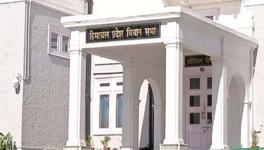Justice Vivek Singh Thakur of the Himachal Pradesh High Court held on July 13 that if the journalist’s intention is to do a reality-check or expose wrong-doing, and therefore, seek improvement of the system, her resort to “impersonation” may be permissible, if the punitive sections of the law are not attracted given the facts of the case.
——-
Last year, the Himachal Pradesh government had issued a direction that all inter-state movement into the state would be monitored through registration via a COVID e-pass software to monitor compliance with the state’s quarantine requirements and facilitate contact tracing of persons in the event of detection of COVID-19 positive cases.
Journalist Aman Kumar Bharadwaj wished to conduct a reality check by testing the functioning of the official web portal, as he came to know that the registration as well as generation of e-pass were being done in mechanical manner without any verification by the authorities. Thus, he filed two online registration forms on the portal for issuance of two e-passes for entering the state without assigning any valid reason.
The registration was in the names of two renowned personalities, namely, Amitabh Bachchan and Donald Trump. Names of renowned personalities were used with the hope that names so mentioned would definitely be taken note of by the authorities during the process of verification. For identity proof, Bhardwaj uploaded his own details, namely, his Aadhaar card number and his telephone number for the two registrations, and mentioned two random vehicle numbers along with other details.
Pursuant to the registration, e-passes so applied in the names of Bachchan and Trump were generated, which substantiated that the passes were being issued without any verification of accompanying documents in a mechanical manner.
The permits were registered and sent to the Bhardwaj via email on May 7 last year. The administration was not pleased when the news was broadcast on Zee. Bhardwaj claimed that he had brought to the notice of certain senior authorities of the state, including the Director General of Police and a Cabinet Minister, prior to the story being televised by him on his news channel, and that only after finding no response from them, he broadcast the story.
Charges against petitioner
The same day, Bhardwaj was charged under the Indian Penal Code (‘IPC’), the Information Technology Act (‘IT Act’), and the Disaster Management Act (‘DMA’) by Ashutosh Garg, head of the state’s information technology department. The journalist’s phone and WiFi equipment were taken by the police after they filed an FIR at the Shimla East police station in the next weeks. The FIR was registered under Sections 419 (punishment for cheating by personation), 468 (forgery for purpose of cheating) and 471 (using as genuine a forged document) of IPC, Section 66D (punishment for cheating by personation by using computer resource) of the IT Act, and Section 54 (punishment for false warning) of the DMA.
Arguments advanced by both sides
In a June 2021 petition to the Himachal Pradesh High Court, he argued that the state’s “harassment” violated his constitutional right to free expression. His petition alleged that the whole registration endeavour was done with the genuine goal of uncovering the truth and flaws behind the registration method for the greater public benefit. As a journalist, the petitioner has a societal duty to monitor the government’s actions, he claimed.
In its response to Bhardwaj’s petition, the Himachal Pradesh government alleged that Bhardwaj’s offences have far-reaching consequences for society, and that his petition is tantamount to threatening the police.
The government, however, chose to be silent on what are these “societal repercussions” or threats to the police investigation.
The government’s case was that Bhardwaj registered the passes using a “false statement” and “fake papers,” and that his report was an attempt to raise a false alarm and “create fear and terror among the general public”.
However, the government’s counter affidavit did not explain how the Zee story produced alarm or frightened the people.
The government’s response did not address Bhardwaj’s claim that the “false declaration” was made to evaluate the robustness of the e-pass system in the public interest. Instead, the government alleged that the news story violated the right to free expression. It reasoned that a false and inaccurate self-declaration made through illicit methods may never be justified as reasonable, and that it is apparent that the petitioner acted with a criminal mentality by making a false and untrue self-declaration. The state government further contended that freedom of speech and expression should not be utilised as a one-way street, but rather with caution and without inflicting harm to anybody.
How the high court decided the matter
Writing the judgment, Justice Vivek Singh Thakur held that in the given facts and circumstances, the act by the petitioner was with intent to defraud; therefore, it was not an act done ‘fraudulently’. Moreover, as Bhardwaj did not do the act with the intention of causing wrongful gain or loss to any person, it could not be termed as an act done ‘dishonestly’, as defined in Section 24 of IPC, the court held.
The basic requirement for ‘cheating’ is that there must be deceiving of a person with fraudulent or dishonest or intentional inducement for a purpose referred in Section 415 of the IPC, which is absent in present case, the high court held.
For absence of essential ingredients for ‘cheating’ and ‘cheating by personation’, there cannot be punishment for cheating under section 419 of the IPC, the high court added. For the same reason, section 66D of IT Act is also not attracted, the high court opined.
Intention, as required under Section 463 of the IPC, is absent and, therefore, the petitioner cannot be said to have committed forgery. In the absence of ‘forgery’ and ‘cheating’, section 468 of the IPC is not attracted, the high court pointed out.
Since there is no forgery committed by the petitioner, there is no fraudulent or dishonest use of a forged document, under section 471 of the IPC, the high court held. Bhardwaj did not use the alleged forged document as a genuine one at any place; instead, he brought the generation of the document to the notice of senior authorities and persons in power.
As Bhardwaj broadcast news about the ineffectiveness of the system after bringing it to the notice of the authorities, it cannot be called a false alarm or warning, but genuine reporting, the high court clarified. Bharadwaj tried to raise alarm and warn the authorities so as to improve the system to avoid disaster or increase in the severity or magnitude of the spread of the COVID-19 pandemic by restricting entry of unwanted persons in the state, the high court observed.
Instead of fixing the e-pass system, and removing its flaws, the state government apparently tried to shoot the messenger in vain, thanks to the high court’s reasoning. “It is apparent that allegations made in complaint/FIR even if they are taken at their face value and accepted in entirety do not, prima facie, constitute any offence or make out a case against the accused”, the high court observed.
Finding merit in Bharadwaj’s petition, the high court quashed the FIR filed against him by the state police and the consequential proceedings arising thereto.
Click here to view the Himachal Pradesh High Court’s full order.

























